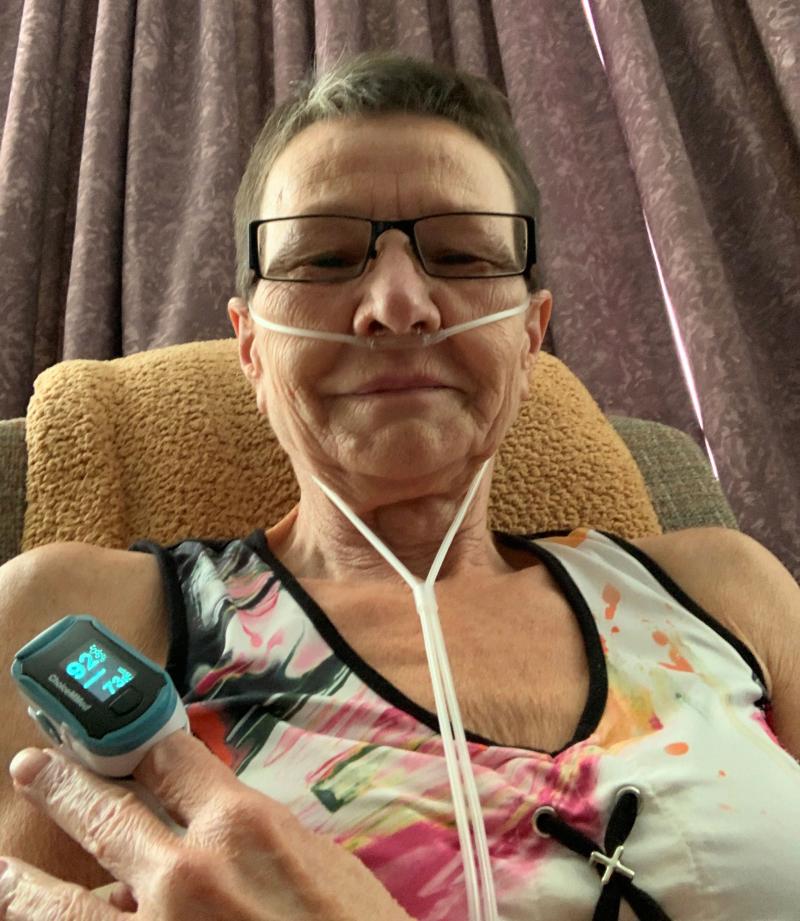Service helps keep COPD clients healthier and at home
A home health monitoring pilot program is helping people with chronic obstructive pulmonary disease (COPD) monitor and manage their health and receive appropriate care quickly.
“The program allows us to have greater outreach for clients with COPD and to support them in remaining well in the community, avoiding hospital visits,” said Amy Reid, a Primary Health Care manager. “I think it will be a game changer.”
Through the COPD Home Health Monitoring Program, respiratory therapists frequently monitor clients’ health while clients have access to self-management information and COPD educators.
The program, which launched on a trial basis in April, serves people living in the former Regina Qu’Appelle Health Region.
Ten people are currently enrolled. Program capacity will grow as more respiratory therapists, deployed to other areas of the Saskatchewan Health Authority (SHA) to support the COVID-19 pandemic, return to their regular community roles in the coming months.
“We enrolled clients we felt were more at risk of having an exacerbation and potentially ending up in emergency,” said Shelley Kovach, a respiratory therapist.
On the first day, two clients were flagged as needing immediate care.
“It was a pretty incredible first day,” said Reid.
Clients need a pulse oximeter to measure the oxygen saturation levels in their blood, and access to the internet through a phone, iPad or laptop so they can sign on to the program app. The SHA and Telus, which is a program partner, will loan devices to clients who may need them.
Clients are to measure their oxygen levels daily and input this information, along with other symptom and health details, into the program questionnaire accessed through the app.
“Their information goes to a virtual platform our providers review every day,” said Reid. “When clinicians go in to look, there are safety flags to indicate whether something is out of range and if interventions like a home visit are needed, for example.”
Kovach said education modules contain information about the disease, medications and disease management through exercise and nutrition.
“We also teach them about managing their mental well-being, healthy breathing techniques, identifying and managing symptoms, such as shortness of breath, and their action plan.”
Patricia Parent was one of the program’s first clients. She likes the fact that the app can be tailored to suit each person’s needs.
“They’ve updated it so I can enter my stats as many times a day as I want.”
She also appreciates the hands-on care. “They’ve called me lots because they’ll see my stats and want to know if I’m okay. They’ll say, ‘You should phone your doctor,’ or ‘do this.’ We communicate a lot. It’s good that way.”
Reid sees the program, once rolled out province-wide, as having the potential to level the playing field for clients regardless of where they live.
“If we have a small rural area that doesn’t have access to the same providers or number of providers we do, they would be able to monitor their clients in a way they wouldn’t have previously been able to,” she said. “This will be a huge win for us.”



